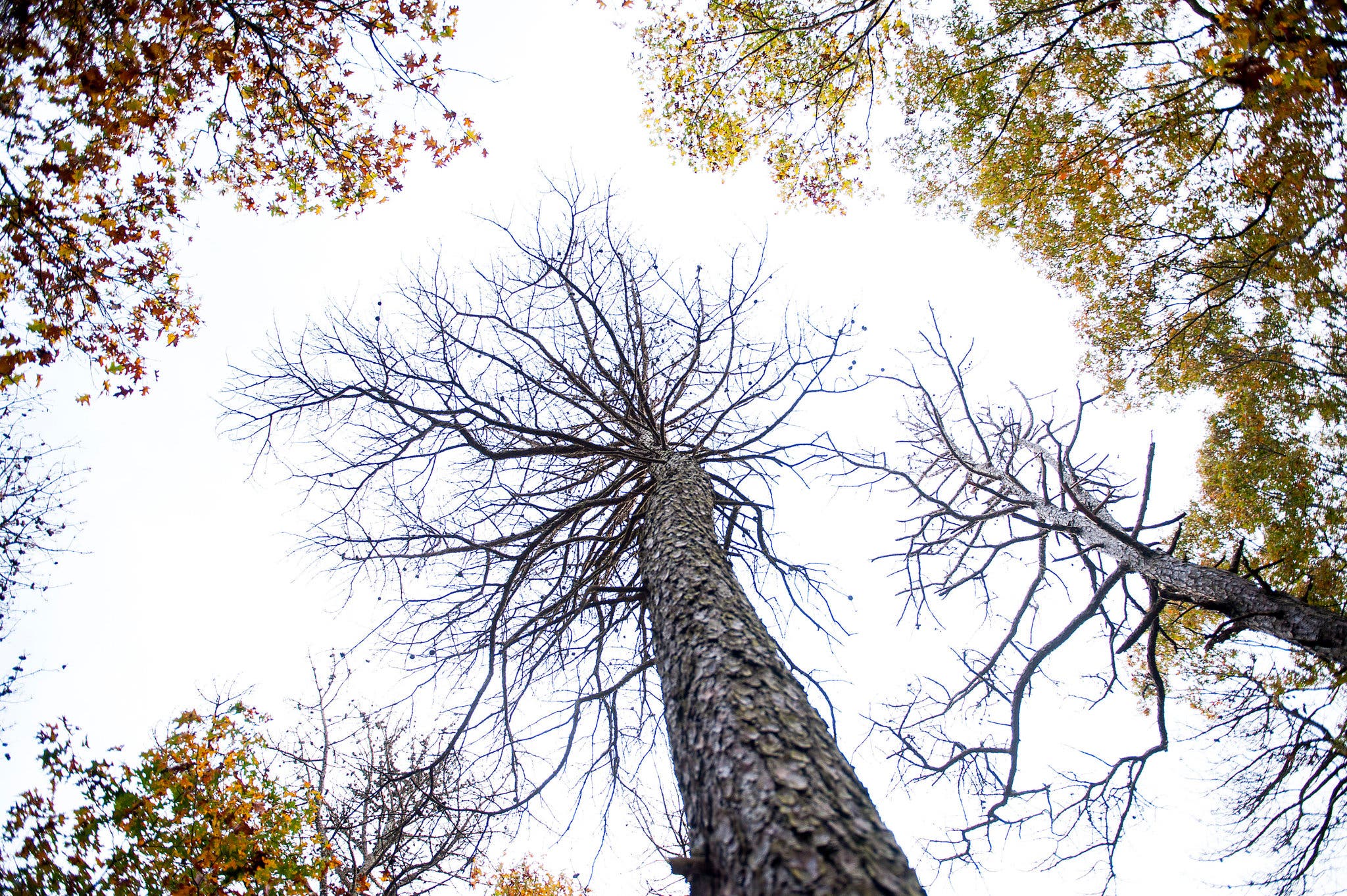我们通过发表论文来表彰学生 STEM 写作比赛的前 10 名获奖者。这是 Daphne Zhu 的作品。

在纽约州雪莉的 Wertheim 国家野生动物保护区,被南方松甲虫蹂躏的枯死沥青松树
加州圣何塞林布鲁克高中 15 岁的 Daphne Zhu 撰写的这篇文章是学习网络第四届年度 STEM 写作比赛的前 10 名获奖者之一,我们收到了 3,000 多份参赛作品。
The Canadian Rockies loom up on both sides of the rickety road we’re bumping along. Mountains, with their high, majestic slopes lush with green forest, never fail to fill me with awe. Except this time, it’s because they’re not green. The whole mountainside is covered with the purple-gray skeletons of pine trees, branches limp, withered, dead.
A fire, I assumed — until I noticed the same view I’d seen outside the car window in a visitor center’s photograph. Pine beetles were eating through forests in the region, the caption explained, leaving barren forest habitat and a serious problem: The area of forest killed by the beetles beats the former record by 10 times. So I jumped into a library database and started reading.
The culprit of forest destruction in western Canada and even the United States lies in the mountain pine beetle. The insects burrow into pine bark and into the phloem, or food-transporting vessel, of the tree. Here, they lay their eggs; when the larvae hatch, they eat away from the inside until they move out to a new tree.
Not only do the beetles themselves carve up the pines, but spores of blue stain fungus also spread from their mouthparts into the phloem they burrow into. Fungal infection is even more effective in blocking nutrient circulation, which quickly leaves the tree to die.
The heart of the issue? Climate change.
Temperature exceeds predation as the primary factor in keeping pine beetle populations under control. Winter’s arrival used to mean that larvae, lacking cold tolerance, would die in great numbers. However, with winter temperatures warming and cold days decreasing in frequency, the beetles’ population growth is overwhelming. “It’s an exponential increase,” states Dr. Jeffrey B. Mitton, a University of Colorado professor of ecology, which means that within years, the crisis could escalate to astronomical heights.
And they’re expanding their range. The beetles conquer territory from Alaska in the north to New Mexico in the south, leaving skeleton forests in their wake. If these infestations continue to spread like spilled ink, blotting out coniferous forests across the continent, the loss will be more than that of green mountain scenery. It will be of a critical carbon sink: As the infested trees decompose, carbon dioxide stored throughout their lifetime is released. All the while, forests that once held the brakes on climate change are no longer absorbing the greenhouse gas from the atmosphere.
The Covid-19 pandemic has highlighted in bold that such diseases have the potential to wipe out millions. Unlike Covid, pine beetle infestation spares no survivors. And unlike Covid, no vaccine will boost the hosts with immunity to mitigate future attack. Besides suppressing outbreaks by removing infected trees before larvae can break out, we must commit to combating climate change. Only then will beetle populations fall back to what they were. Only then will we prevent the sight of faded mountainsides from becoming a lasting relic for future generations. Only then will we protect the longevity of the great forests of North America.
Works Cited
Embrey, Sally, MSPH, et al. “Climate Change and Ecosystem Disruption: The Health Impacts of the North American Rocky Mountain Pine Beetle Infestation.” American Journal of Public Health, May 2012.
Morgan, Korey. “Racing the Clock to Stem the Spread of the Mountain Pine Beetle.” U.S.D.A. Forest Service, 11 May 2021.
Perkins, Sid. “Book Review: Empire of the Beetle: How Human Folly and a Tiny Bug Are Killing North America’s Great Forests (David Suzuki Foundation Series) by Andrew Nikiforuk.” Science News, 7 Oct. 2011.
Robbins, Jim. “Double Trouble From Mountain Pine Beetles?” The New York Times, 19 March 2012.